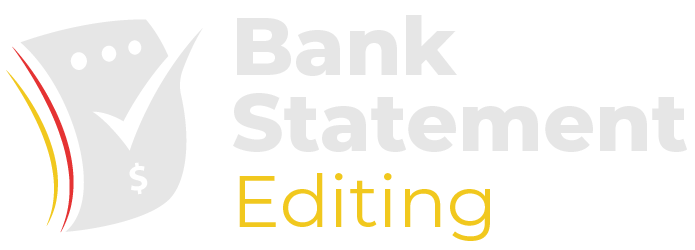The Consequences of Using Fake Bank Statements for Loan Applications

In the realm of financial desperation, some resort to using fake bank statements to secure loans. However, this deceptive practice comes with severe legal, financial, and ethical ramifications. In this article, we delve into the risky world of fake bank statements for loan applications, uncovering the dangers and highlighting the importance of transparency and integrity in financial transactions.
In the quest for financial assistance, some individuals resort to desperate measures, including the creation and use of fake bank statements to secure loans. This article aims to shed light on the dangers and consequences of such practices, urging individuals to choose the path of honesty and integrity in financial transactions.
Understanding Fake Bank Statements
Fake bank statements are fabricated documents that portray fictitious financial transactions, balances, and histories. These documents are used to deceive lenders into approving loan applications based on false information.
The Lure of Fraudulent Loan Applications
Desperation for funds and the allure of quick loan approval often drive individuals to consider unethical practices, such as using fake bank statements. This stems from the misconception that manipulating financial records can lead to easier access to credit.
Legal and Financial Implications
Using fake bank statements is not only morally wrong but also illegal. The repercussions include:
- Criminal Charges: Forgery and fraud charges can lead to legal penalties.
- Loan Denial: Lenders can reject loan applications upon discovering fake documents.
- Financial Instability: Borrowers may face repayment challenges based on inaccurate financial information.
Ethical Considerations
Honesty and transparency are the foundation of ethical financial behavior. Engaging in deceptive practices erodes trust and undermines the integrity of the financial system.
Methods Employed in Creating Fake Statements
Fraudsters use various methods, such as altering scanned documents, digitally manipulating images, or using online tools, to create convincing fake bank statements.
Read it: Fake Statement Generator: Unveiling the Modern Tool for Creativity and Pranks
How Lenders Detect Counterfeit Documents
Lenders employ advanced techniques, including cross-referencing with credit reports and direct communication with financial institutions, to verify the authenticity of bank statements.
Tips to Avoid the Temptation
To resist the temptation of using fake statements:
- Educate Yourself: Understand the legal and financial consequences of such actions.
- Seek Alternatives: Explore legitimate loan options and improve financial standing.
- Seek Financial Counseling: Consult financial experts for guidance.
Building a Strong Financial Profile
Focus on enhancing credit scores, maintaining a consistent financial history, and managing debt responsibly to improve loan eligibility.
Alternative Paths to Loan Approval
Instead of resorting to deception, borrowers can consider co-signers, collateral, and improving credit scores to increase their chances of loan approval.
Educating Borrowers on Financial Literacy
Promoting financial education and literacy equips individuals with the knowledge needed to make informed financial decisions.
Preventing Future Deceptive Practices
Government agencies, financial institutions, and individuals play a role in preventing future deceptive practices by fostering transparency and accountability.
Read it: How to Do Payroll in 3 Easy Steps
Conclusion
The allure of fake bank statements for loan applications may seem tempting, but the potential legal, financial, and ethical consequences far outweigh any perceived benefits. By choosing the path of honesty, borrowers can establish a solid financial foundation, build trust with lenders, and contribute to a responsible and trustworthy financial landscape.
